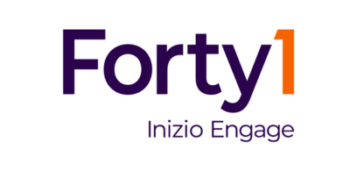The three “As” of Affinity movements: how to be a year-round platform for DEI
 Luke-Matthew Iveson
Luke-Matthew Iveson While many organizations take pride in celebrating their business achievements, there’s a growing need to invest time and effort to deeply understand and genuinely honour the affinity celebrations that matter to their people. These moments are not just dates in a calendar; they represent the shared experiences, struggles, and traditions of entire communities. They go beyond mere acknowledgment — it’s about understanding, supporting, and celebrating the diversity that shapes not only our world but also the experiences of every employee walking through our doors. Organizations must embrace and be accountable for embracing these celebrations not just as annual events, but as integral parts of their ongoing DEI journey – all year round.
Many of the affinity celebrations we observe today emerged from resistance against deep-seated societal challenges like discrimination and prejudice. These dates are not mere historical markers; they are potent reminders of both progress achieved and challenges that persist. However, in today’s corporate landscape, there’s a growing concern that the essence of these celebrations is being lost. Have these important days become mere checkmarks on our corporate communications calendars? Are we celebrating them out of habit rather than accountability?
This issue points to a larger challenge in the corporate approach to DEI — the risk of superficiality. Token gestures like changing logos for Pride Month or repetitive storytelling can dilute the true meaning of these celebrations. Authentic DEI requires more than performative displays; it demands meaningful action rooted in understanding and respect. To transform this depth of engagement into a tangible reality, we advocate a focused approach encapsulated in three As: Accountability, Awareness, and Action. Each of these pillars plays a crucial role in turning well-meaning rhetoric into meaningful change.
Accountability: Articulating the ‘Why’
The ‘Why’ of affinity celebrations is about more than acknowledging a date; it’s about comprehending its significance to both the organization and its people. This phase demands introspection and honesty: Why are these celebrations important? What relevance do they hold in the context of the organization’s values and the diverse experiences of its employees? This understanding is the cornerstone of accountability.
Organizations need to reflect on how these events align with their core values and the broader goals of their DEI initiatives. It’s about embedding the essence of these celebrations into the company’s culture, ensuring that it resonates with both leadership and the workforce. This need for deeper reflection is underscored by promising statistics: 75% of HR and corporate leaders in Europe now have a dedicated budget for DEI, and 90% are implementing at least one initiative driven by data to foster continuous improvement. This shift towards resource allocation for DEI underlines the increasing recognition of its importance in corporate strategy.
Snap Inc. has demonstrated Accountability in their DEI strategy by instituting Quarterly Business Reviews for leadership to track DEI objectives. This approach has led to a shift from sporadic DEI efforts to each department developing specific DEI goals. By increasing leadership’s hands-on support and refining their Diversity Data Dashboard for better tracking, Snap has shown a commitment to integrating DEI into its business operations, making it a shared responsibility across the company. This systematic approach ensures DEI isn’t an add-on but a core component of the company’s strategy, with clear targets and accountability at all levels.
Awareness: Unravelling the ‘What’
The ‘What’ centres on raising awareness about the history, significance, and current relevance of each affinity celebration. This isn’t just about surface-level engagement; it’s about delving deep to uncover what these days truly represent and how they can spur real change within the organization. What do these celebrations mean for our society and our workplaces? What kind of engagement and understanding are required to move beyond tokenism?
Awareness also involves challenging preconceptions and encouraging open dialogues that can lead to a deeper understanding and empathy. It’s about creating opportunities for learning and reflection, helping employees to connect with the essence of these celebrations in a way that is both meaningful and transformative. However, challenges remain. A recent DEI focus group conducted by us at Forty1 revealed a gap in understanding among leaders: many still struggle to fully grasp DEI and organizational challenges and are uncertain about utilizing the DEI data they collect. There was a noticeable sentiment that DEI initiatives were not being leveraged effectively, often being treated as isolated programs rather than integrated tools for enriching organizations and mitigating various business risks.
Netflix’s dedication to Awareness in DEI is exemplified by their in-depth study with the USC Annenberg Inclusion Initiative, which scrutinizes their original content for diversity and representation. The study revealed that Netflix has made commendable strides in gender equality, with women taking the lead in over half of the films and series. It also highlighted a year-over-year increase in racial and ethnic diversity among leads. However, the study identified that Latinx characters and creators, as well as the LGBTQ+ community and individuals with disabilities, are areas where Netflix can further improve representation. By openly evaluating and sharing these findings, Netflix demonstrates a commitment to continuous learning and improvement, embodying the Awareness pillar by using data to inform more inclusive storytelling practices.
Action: Sparking the ‘How’
The ‘How’ is where awareness and understanding are transformed into tangible, impactful actions. It’s about taking the insights gained from the ‘Why’ and the ‘What’ and implementing them in ways that genuinely foster diversity, equity, and inclusion within the organization. This step is critical as it moves the organization beyond rhetoric and into the realm of concrete, measurable progress.
Action can take many forms, from revising internal practices to ensure fairness and inclusivity, to supporting community initiatives that align with the values highlighted in these affinity celebrations. It’s also about maintaining this momentum throughout the year, ensuring that DEI is not just a topic for specific dates but a continuous commitment.
This phase requires a strategic approach, combining policy changes, cultural shifts, and sustainable practices. The key is to create initiatives that are not only symbolic but also bring about real change in the organizational structure and culture. This might involve establishing mentorship programs, enhancing employee resource groups, or embedding DEI objectives into business strategies.
IBM’s “Be Equal Be Active” initiative serves as a powerful illustration of Action within their DEI framework, turning principles into practice by fostering allyship and advocacy. This initiative equips IBM employees, and external audiences, with the knowledge and tools to act as allies within the workplace, promoting a culture of active support across diverse groups. Through dedicated training and resources, IBM empowers its workforce to advocate for equity, ensuring that DEI is more than just a policy — it is an integral part of the company’s ethos and daily operations, driven by the collective action of its people.
It is important to acknowledge that real, lasting change in DEI is a journey, not a destination. It requires slow, intentional work, characterized by planned, sustained effort. Organizations must remain patient yet persistent, understanding that the road to true inclusivity and equity is a continuous process of growth and improvement. The journey towards genuine diversity, equity, and inclusion is continuous and multifaceted. It demands more than just surface-level acknowledgment; it requires a sustained commitment to Accountability in understanding the ‘Why’, Awareness in exploring the ‘What’, and Action in executing the ‘How’. By embracing these three As, organizations can move beyond tokenistic gestures, embedding true DEI values into every facet of their culture and operations, thereby shaping a more inclusive and equitable future for all.
Next Article
 Rani Khalon
Rani Khalon
Affinity Celebrations: How You Get Involved
How do we keep our people passionate about the causes we commemorate and ensure they make a positive difference? In the...
Read more Laura Hunt
Laura Hunt
Affinity Celebration Series: What you should know
Affinity celebrations often serve as a moment in time for us to come together, honour diverse histories and celebrate...
Read more Rani Khalon
Rani Khalon
Belonging: The Future of Work
We recently had the opportunity to attend the Future of Work conference in London, a gathering that brought together...
Read more